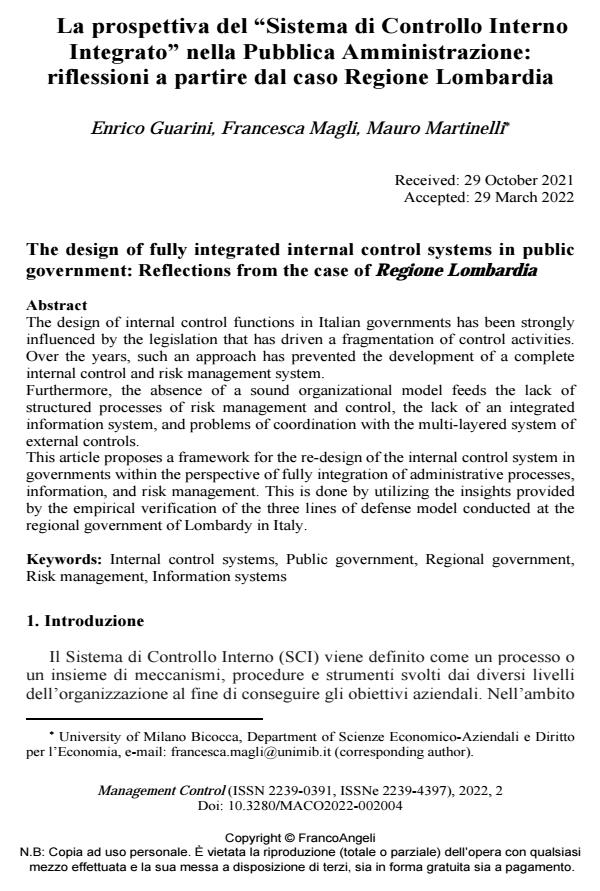The design of fully integrated internal control systems in public government: Reflections from the case of Regione Lombardia
Journal title MANAGEMENT CONTROL
Author/s Enrico Guarini, Francesca Magli, Mauro Martinelli
Publishing Year 2022 Issue 2022/2
Language Italian Pages 27 P. 63-89 File size 540 KB
DOI 10.3280/MACO2022-002004
DOI is like a bar code for intellectual property: to have more infomation
click here
Below, you can see the article first page
If you want to buy this article in PDF format, you can do it, following the instructions to buy download credits

FrancoAngeli is member of Publishers International Linking Association, Inc (PILA), a not-for-profit association which run the CrossRef service enabling links to and from online scholarly content.
The design of internal control functions in Italian governments has been strongly influenced by the legislation that has driven a fragmentation of control activities. Over the years, such an approach has prevented the development of a complete internal control and risk management system. Furthermore, the absence of a sound organizational model feeds the lack of structured processes of risk management and control, the lack of an integrated information system, and problems of coordination with the multi-layered system of external controls. This article proposes a framework for the re-design of the internal control system in governments within the perspective of fully integration of administrative processes, information, and risk management. This is done by utilizing the insights provided by the empirical verification of the three lines of defense model conducted at the regional government of Lombardy in Italy.
Keywords: Internal control systems, Public government, Regional government, Risk management, Information systems
- Dalla misurazione dell'outcome a quella dell'impact: la Sentiment Analysis a supporto della valutazione della performance delle aziende sanitarie pubbliche Christian Di Falco, Guido Noto, Gustavo Barresi, in MANAGEMENT CONTROL 2/2025 pp.157
DOI: 10.3280/MACO2025-002008
Enrico Guarini, Francesca Magli, Mauro Martinelli, La prospettiva del "Sistema di Controllo Interno Integrato2 nella Pubblica Amministrazione: riflessioni a partire dal caso Regione Lombardia in "MANAGEMENT CONTROL" 2/2022, pp 63-89, DOI: 10.3280/MACO2022-002004